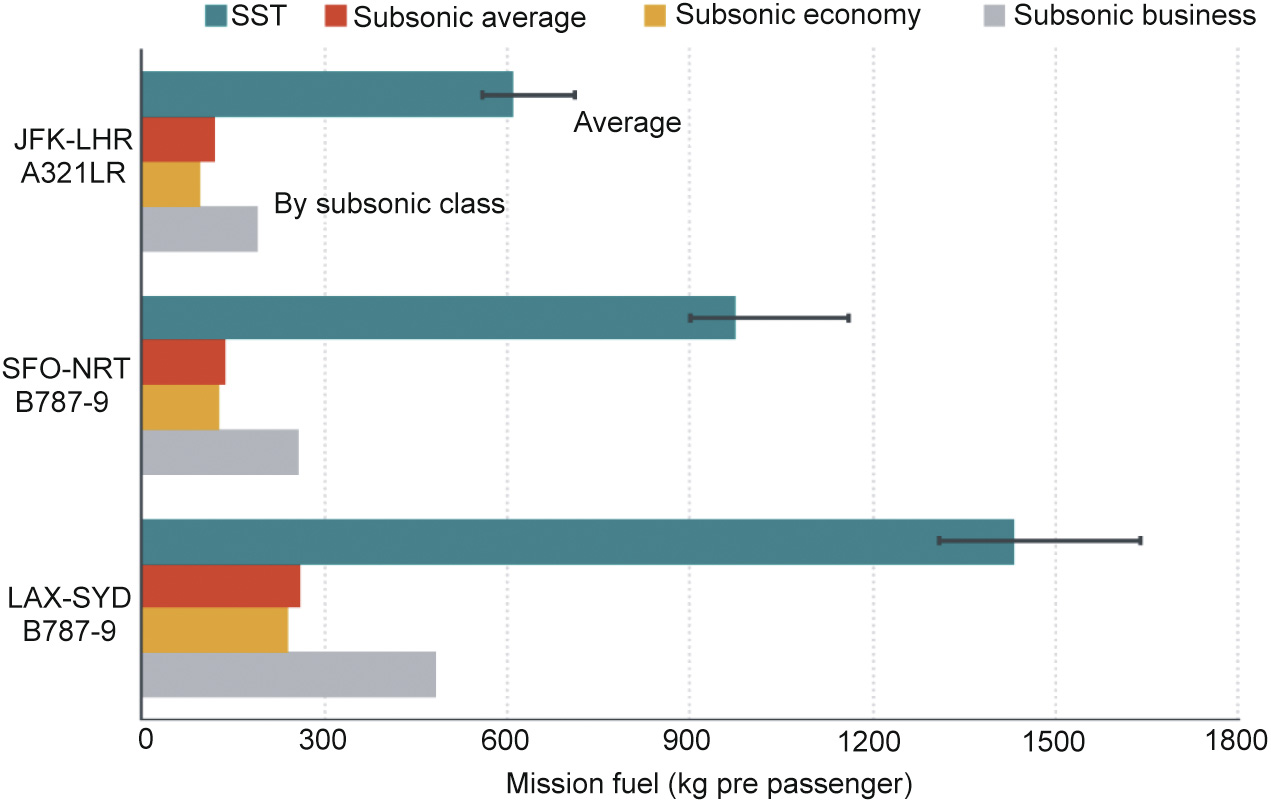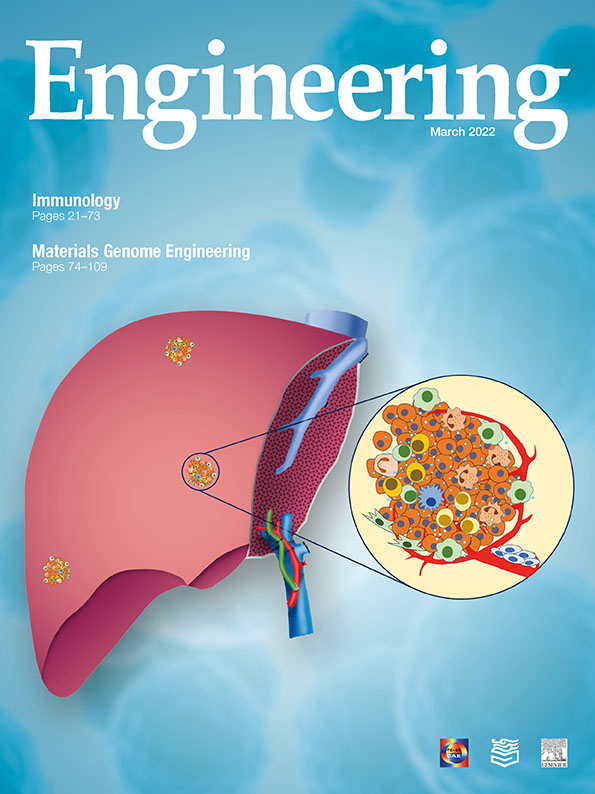In June 2021, United Airlines, one of the largest airline operators in the world, signed a deal with Boom Supersonic of Denver, CO, USA, to purchase 15 supersonic ‘‘Overture” airliners, with an option to buy 35 more [1]. To fulfil the contract, Boom Supersonic must first build the aircraft, and do so in accordance with United Airline’s safety, operating, and sustainability requirements.
The United-Boom deal highlights a budding resurgence of interest in commercial supersonic flight. The skies have hosted no supersonic passenger planes since the retirement of the beleaguered Concord fleet in 2003 [2]. The opportunity to once again cut long-haul flight times in half may appeal to those whose time is extremely valuable, or who might enjoy the status associated with supersonic travel. Boom is betting there are enough of those people to make their venture viable.
Besides Boom, a handful of other US-based start-ups have designs for commercial supersonic aircraft in development [3,4]. Interest in supersonic transport (SST) is also being shown in Japan: in June 2021, the Japan Aerospace Exploration Agency announced an industry collaboration that aims to produce supersonic planes by 2030 [5]. Boom, however, is the only commercial entity with a completed prototype in the hangar—a one-third-scale aircraft called the XB-1 (Fig. 1). Declared one of Time magazine’s ‘‘Best Inventions of 2021” [6], the XB-1 is about 22 m long, and has a Delta-wing design with its airframe constructed from carbon composite materials. The aircraft has yet to fly, but three General Electric J85 turbojet engines will propel it when it does.
《Fig. 1》

Fig. 1. Boom Supersonic’s XB-1 prototype aircraft, unveiled in October 2020, is a one-third-scale version of its planned Overture commercial SST. Credit: Boom Supersonic (public domain).
Boom’s proposed Overture airliner remains in development, with Rolls Royce potentially supplying the engines [7]. Expected to cruise at an altitude of 18 300 m at Mach 1.7, the 63 m plane will carry between 65 and 88 passengers. Boom says it will break ground on its Overture production facility in 2022, have the first aircraft built by 2025, and the first paying passengers in the air in 2029. But all this will depend on the company finding a good deal of additional investment.
The expensive road to supersonic commercial flight is littered with failed efforts, with Reno, NV, USA-based Aerion Supersonic the latest. Founded in 2004 and more recently partnered with Lockheed Martin and GE Aviation, Aerion was considered a promising supersonic project, but it collapsed in May 2021, having never produced a prototype of its AS2 business jet [8]. The company said it had proven ‘‘hugely challenging” to attract the new capital investment required to take its aircraft into production [9].
The economics of SST are tough: high fuel consumption, low passenger numbers, high price to passengers, and limited route options, with even the Concorde widely considered an economically dubious endeavour [10]. Regarding the limited route options, would-be makers of supersonic commercial aircraft must wrestle with the persistent problem of sonic booms, the ear-splitting and potentially damaging noise created by aircraft flying beyond the speed of sound (about 1239 km·h-1 at sea level and 1062 km·h-1 at cruising altitudes). The booms produced by the shockwaves created by SST are so loud that the Federal Aviation Authority (FAA) banned supersonic passenger flights over land in the US in 1973 [11], cutting off a huge section of the market and stifling further development of SST. The hope of today’s supersonic ventures is that the FAA might be persuaded to lift the ban if SST can be made quieter. ‘‘That could be a game changer,” said Tasos Lyrintzis, professor and chair of aerospace engineering at Embry-Riddle Aeronautical University in Daytona Beach, FL, USA. ‘‘It might move the needle enough to make a real business case for SST.”
While the results of experimental simulations support the prospect of quieter supersonic planes [12,13], the FAA is a very conservative organization, said Lyrintzis. ‘‘They are not going to change the rule unless they see a prototype aircraft and real-life sound measurements.”
Such a prototype and measurements may be forthcoming soon from a US National Aeronautics and Space Agency (NASA) project [14]. The goal of its Low-Boom Flight Demonstration (LBFD) mission is to show that a sonic boom can be sufficiently quieted for people to tolerate it over land, with the ultimate aim to open all the sky, beyond just over the oceans, to supersonic travel. Its X-59 aircraft, with Quiet SuperSonic Technology (QueSST) [15], is currently under construction at NASA’s industrial partner in the mission, Lockheed Martin Skunk Works in Palmdale, CA, USA (Fig. 2). ‘‘If you just design a supersonic aeroplane for performance, like a F-22, or like Concorde for that matter, those shockwaves that come from the individual features will inevitably coalesce into one very large shockwave, which results in a very loud bang,” said lead engineer for the X-59 program at Lockheed Martin Skunk Works, Michael Buonanno, in a recent video presentation [16]. ‘‘On X-59, we have carefully designed the aeroplane to keep those shockwaves separate so that they do not come together, and they result in a soft thump.”
《Fig. 2》

Fig. 2. (a) NASA’s X-59 QueSST aircraft, under construction at Lockheed Martin Skunk Works in Palmdale, California. The long nose of the X-59 is crucial for minimizing shockwaves during supersonic flight. (b) An artist’s conceptual depiction of the X-59 in flight. (c) The product of a computer simulation showing supersonic shockwaves emanating from the X-59 aircraft in supersonic flight [12]. The dark and bright regions represent shockwaves and expansions. The research shows weaker shocks propagating from the underside of the aircraft, suggesting that quieter sonic ‘‘thumps” would be heard on the ground. Credits: (a) Lockheed Martin (public domain); (b) NASA/Joey Ponthieux (public domain); (c) NASA/ Marian Nemec and Michael Aftosmis (public domain).
Yicheng Sun, a research fellow in aerospace vehicle design at Cranfield University in the UK, has taken the publicly available shape specifications of the X-59 and simulated its sonic performance using Cranfield’s Genus aircraft conceptual design environment [13]. ‘‘NASA has very deep understanding of the low boom shaping technique,” said Sun. ‘‘Compared to several other supersonic configurations, the X-59’s sonic boom is really low. NASA appears to use the shaping technique to mismatch the peaks of the shockwaves, so they do not coalesce and cause a strong sonic boom, and also so that they actively cancel each other out to some extent.”
Initial test flights of the X-59 are expected in 2022, with further flights in 2023 on the test range at the Armstrong Flight Research Center in California [17] (Fig. 3). In 2024, the mission will include flights of the prototype over communities across the US to gauge the responses of people on the ground. Should these results convince the FAA to amend its current ban on supersonic flights over land, that could open up a substantial number of additional passenger routes and make the economics of commercial SST more appealing.
《Fig. 3》

Fig. 3. An illustration of NASA’s ‘‘Concept of Operations” for its three-phase LBFD mission. Phases 1 and 2 will feature flights of the X-59 demonstrator aircraft over the Edwards Air Force Base in California, including monitoring by various support planes. For the final phase, the X-59 will fly over communities around the USA to evaluate the responses of citizens. Credit: NASA (public domain).
However, for its first-generation Overture, Boom intends to fly supersonically only over water. In April 2021, the company’s chief executive officer, Blake Scholl, gave testimony to the Aviation subcommittee of the US Congress’s Transportation and Infrastructure Committee [18]. ‘‘The question of ‘quiet boom,’ and sonic boom over communities is not something we are addressing in Overture one,” said Scholl, who anticipates the company’s second generation of aircraft potentially being designed to fly over land. ‘‘What we really need, to have this be mainstream everywhere, are global standards for supersonic flight over land—understanding what is going to be an acceptable level of noise over communities that does not create disruption. Once we have certainty on those standards, we can build aircraft to meet them.”
Other key issues for SST are its poor fuel efficiency and oversized environmental impact. When the International Council on Clean Transportation (ICCT)—a Washington, DC, USA-based independent non-profit group that provides research and analysis to environmental regulators—modelled the likely performance of potential SST, it estimated that they would burn at least five times as much fuel per passenger as subsonic aircraft on representative routes, translating to markedly increased CO2 emissions per passenger-km (Fig. 4) [19].
《Fig. 4》

Fig. 4. A comparison of fuel consumption per passenger between SST and standard long-haul passenger airliners, the long-range Airbus A321 (A321LR), and the stretched Boeing 787-9 Dreamliner (B787-9), flying between international airports. Top: John F. Kennedy International Airport, New York City, NY, USA (JFK), to London’s Heathrow Airport, UK (LHR); Middle: San Francisco International Airport, USA (SFO), to Narita International Airport, near Tokyo, Japan (NRT); Bottom: Los Angeles International Airport, USA (LAX), to Sydney Airport, Australia (SYD). Credit: ICCT, with permission.
Boom’s public relations efforts lead with claims that its Overture aircraft will use up to 100% sustainable aviation fuel (SAF) [1]. Produced from renewable materials or waste sources, including vegetable oil and ethanol, SAF can reduce the life-cycle carbon emissions of jet fuel by as much as 80%, according to the International Air Transport Association [20], a trade association of the world’s airlines, based in Montreal, Canada.
But SAF is much more expensive than standard jet fuel, and Boom’s expectation for its use may be unrealistic. In 2019, for instance, airlines consumed just 50 million liters of SAF, accounting for only 0.01% of the global use of aviation fuel, according to the International Energy Agency [21]. And once Boom sells a plane, ‘‘they will have no control over what fuel is actually used,” said Dan Rutherford, program director for ICCT’s aviation and marine programs. ‘‘Ultimately, the combination of SST’s poor fuel efficiency and challenging underlying economics makes them a rather poor combination with SAF, which currently costs two to five times as much as fossil-based jet fuel.”
In addition, the climate impact of SST goes beyond increased CO2 emissions. In a 2021 report produced for NASA [22], researchers at the Massachusetts Institute of Technology modelled the radiative forcing, or warming, created by the water vapor and other aerosols emitted by a notional SST airliner travelling at roughly twice the cruising altitude of traditional airliners. Their results estimated that warming effect to be 20 times greater per passengerkm for supersonic flights compared with typical subsonic flights
Factoring together its high economic and environmental costs, SST’s promise to deliver a few hours less in the air begins to seem like quite a lot to ask for. Is there a new age of supersonic travel in the near future? Lyrintzis remains skeptical: ‘‘Allow me to keep my mind open until I see it happen,” he said. ‘‘What I am sure of, however, is that development dates will continue to slip.”













 京公网安备 11010502051620号
京公网安备 11010502051620号




